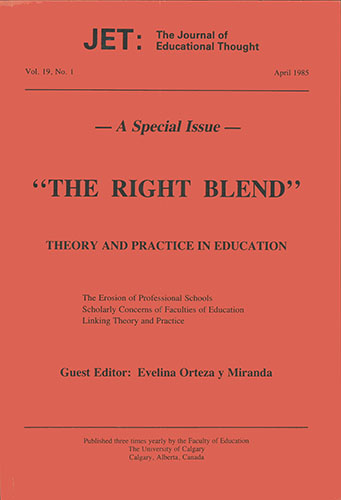Survival in a Time of Crisis: the Professional Faculty in British Columbia
DOI:
https://doi.org/10.55016/ojs/jet.v19i1.44148Abstract
" Schools of Art , Education and Natural Resources to be reviewed! " read the headlines in Michigan Daily, soon to be followed by smaller but equally as serious headlines in the Ann Arbor News, The Detroit Free Press and, yes, even the New York Times. What followed was two years of agonizing effort by the students, faculty and administration of a major, Big Ten University to grapple with the perceptions, hopes and reality of a review that would leave in its wake a demoralized faculty and reduced enrollment. The School of Education, rated number one in the United States by at least one outside reviewer, was being challenged by the spectra of closure. Closure of a school of education in a university noted for having the first permanent chair, in 1879, devoted exclusively to the training of secondary school teachers and administrators; closure of school noted for having John Dewey so involved in teaching and research that he forgot and left the perambulator containing his baby in front of the Ann Arbor post office one sunny day; closure of a School of Education rated in 1977 as having the best undergraduate teacher education program and in 1983 the best graduate teacher preparation program . The fact of review sank in slowly for the faculty and students and is still sinking in. With relief, we can say that the recent reports of our demise have been greatly exaggerated. The fact is not that the School of Education is headed for closure but that the School of Education at The University of Michigan will take a 40% budget cut over the next five years.
Downloads
Downloads
Published
Issue
Section
License
The Journal of Educational Thought retains first publication rights for all articles. The Journal grants reproduction rights for noncommercial educational purposes with the provision that full acknowledgement of the work’s source be noted on each copy. The Journal will redirect to the appropriate authors any inquiries for further commercial publication of individual articles. All authors wishing to publish in JET will be asked to fill in and sign a Consent to Publish and Transfer of Copyright agreement.
Authors must affirm that any submission to JET has not been and will not be published or submitted elsewhere while under considration by JET.

